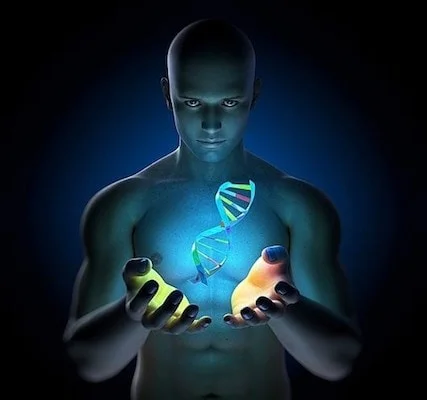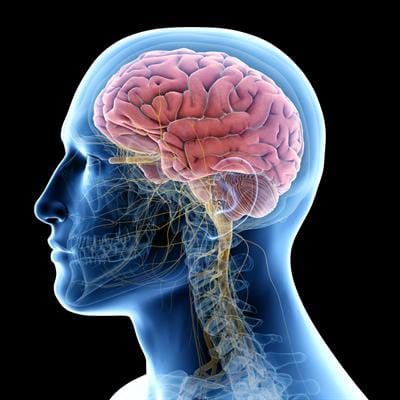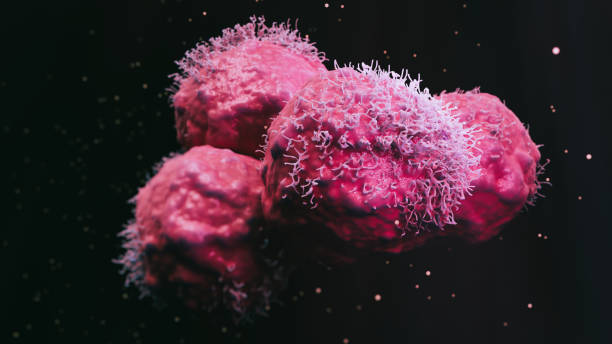If you accidentally cut your finger while chopping vegetables, you might wince in pain, but your body immediately springs into action. No emergency room visit is needed for that minor injury, and within days, your skin will knit itself back together like nothing ever happened. This ordinary miracle is part of your body’s incredible ability to heal itself—a feat so complex and precise that even the most advanced medical technologies can only mimic parts of it.
Healing is not magic. It’s a symphony of biology, chemistry, cellular behavior, and intricate communication between systems. From repairing wounds and regenerating tissue to eliminating viruses and creating scar tissue, the human body is equipped with one of the most efficient repair mechanisms known to nature. Understanding how this process works is not only fascinating—it’s vital for appreciating the marvel that is human life.
Let’s dive deep into this awe-inspiring biological orchestra and discover how our bodies regenerate, repair, and rise from trauma, illness, and injury like nature’s very own Phoenix.
The First Responders: Inflammation and Immune Defense
Every healing journey begins with a bit of chaos—controlled chaos, that is. When tissue is injured—whether by a physical cut, a burn, or a microscopic virus—the first step in the body’s response is inflammation. Despite its bad reputation, inflammation is essential for healing. Without it, the repair crew wouldn’t know there was a problem.
Inflammation acts like an emergency flare in the body. Blood vessels dilate, increasing blood flow to the injured area, and white blood cells flood the scene. These immune cells are the body’s first responders. Neutrophils, a type of white blood cell, arrive within minutes, gobbling up bacteria and cellular debris. They are followed by macrophages, larger immune cells that not only clean up dead tissue but also send out chemical signals that orchestrate the next phases of healing.
This initial phase is often marked by redness, heat, swelling, and pain—symptoms we usually dislike but which are signs that the body is responding effectively. It’s in these early hours that the groundwork for repair is laid. Without this inflammatory response, even a minor injury could turn lethal due to infection or uncontrolled tissue damage.
Regeneration: Tissues That Grow Back
Once the danger has been neutralized and the wound cleaned, the body switches gears from defense to reconstruction. This is where things get even more amazing.
The human body is built from over 200 types of specialized cells. Some of them, like skin and liver cells, have a remarkable ability to regenerate. Others, like heart and nerve cells, are less generous with their healing potential.
The second phase of healing involves the proliferation of new cells. Fibroblasts, a type of connective tissue cell, play a crucial role here. They produce collagen and extracellular matrix—the scaffolding on which new tissue is built. Capillaries begin to sprout from existing blood vessels, forming a network that will nourish the regenerating cells.
Skin wounds heal through a process called re-epithelialization, where basal skin cells migrate across the wound, multiply, and rebuild the epidermal barrier. The liver, on the other hand, can regenerate lost tissue so effectively that even if up to 70% of it is removed, it can grow back to full size.
However, not all organs are this generous. The brain and spinal cord, once damaged, have a very limited capacity for regeneration, which is why neurological injuries are so devastating. Still, even here, the body is not helpless. Researchers have discovered that the brain can rewire itself to some extent through a process known as neuroplasticity—a form of adaptive healing where undamaged areas of the brain take over functions of the damaged parts.
Scars: When Regeneration Isn’t Perfect
While regeneration is the ideal outcome, it’s not always possible. When the injury is too extensive or the tissue type doesn’t regenerate well, the body opts for a backup strategy—scar formation.
Scars are the body’s version of emergency patchwork. Instead of recreating the original tissue, the body fills in the gap with fibrous connective tissue, primarily composed of collagen. It’s fast and efficient, but not quite like the original. Scars lack hair follicles, sweat glands, and the flexibility of normal skin.
Even so, scarring is essential. Without it, wounds would remain open, vulnerable to infection and ongoing blood loss. In deeper tissues, scar formation can prevent organ rupture or stabilize an otherwise compromised area. Unfortunately, in some cases, scarring can go overboard, leading to problems like keloids or fibrosis—excessive scar tissue that interferes with function.
Scientists are working on ways to reduce or eliminate scarring by manipulating growth factors, using stem cells, or even employing gene therapy. The goal? To nudge the body away from scar tissue and back toward true regeneration.
The Silent Heroes: Stem Cells and Cellular Plasticity
No discussion of self-healing would be complete without mentioning stem cells—the master keys of the cellular world. These undifferentiated cells can become any type of cell the body needs, whether it’s a muscle cell, a neuron, or a skin cell.
Stem cells reside in various tissues, lying dormant until they’re needed. When injury occurs, these cells are activated and migrate to the injury site. They then differentiate into the necessary cell types, helping rebuild and restore the tissue.
The potential of stem cells is so vast that they’ve become a focal point for regenerative medicine. Scientists are learning how to harness them to treat everything from spinal cord injuries to heart disease and even neurodegenerative disorders like Parkinson’s.
Interestingly, the adult body also exhibits a phenomenon called cellular plasticity. This means that under certain conditions, mature cells can revert to a more primitive state and transform into a different type. This natural reprogramming ability is another ace in the body’s healing deck.
The Power of the Mind: Placebo and Psychoneuroimmunology
Now here’s where things get really interesting. It turns out that healing isn’t just about cells, chemicals, and tissues. The brain plays a starring role in how well—and how quickly—the body heals.
Numerous studies have shown that stress, depression, and anxiety can significantly impair the body’s ability to heal. Chronic stress elevates cortisol levels, which suppresses the immune system, delays wound closure, and increases susceptibility to infections.
On the flip side, positive emotions, relaxation, and a sense of control have been linked to faster recovery. The emerging field of psychoneuroimmunology explores how the mind interacts with the nervous and immune systems. It’s no longer science fiction to say that your mindset can influence your immune response.
Perhaps the most intriguing example of this is the placebo effect. When patients believe they’re receiving treatment—even if it’s just a sugar pill—they often show real physiological improvements. Brain scans reveal that placebos can activate reward pathways, reduce pain perception, and even influence hormone levels. It’s the brain hacking the body into healing.
Microbiome: The Healing Helpers You Never See
You are not alone. Right now, you’re hosting trillions of microscopic organisms—bacteria, viruses, fungi, and more—on your skin, in your gut, and throughout your body. Collectively, this invisible ecosystem is called the microbiome, and it plays a critical role in health and healing.
Your gut microbiome, for example, helps digest food, produce vitamins, and regulate the immune system. A balanced microbiome can reduce inflammation, improve tissue repair, and enhance resilience against disease. Disruption of this balance—through antibiotics, poor diet, or stress—can lead to slower healing, increased infection, and chronic inflammation.
Skin microbes are also guardians of health. When the skin is injured, certain bacteria can stimulate healing by releasing growth factors and modulating immune responses. This discovery has even led to new treatments, where beneficial bacteria are applied directly to wounds to speed up recovery.
Researchers are now exploring fecal microbiota transplants, probiotic therapies, and microbiome engineering as ways to amplify the body’s natural healing mechanisms.
Bone Healing: Nature’s Internal Construction Crew
Breaking a bone is often painful and traumatic, but it’s also an example of one of the most remarkable healing feats in the human body. Unlike synthetic materials like plastic or metal, bone doesn’t just patch itself—it rebuilds with full strength.
When a bone breaks, blood vessels within it rupture, forming a clot known as a fracture hematoma. This serves as a signaling hub for immune cells and growth factors. Over the next few weeks, a soft callus made of cartilage forms around the fracture. This is gradually replaced by a hard callus made of woven bone, which is later remodeled into solid, compact bone.
The entire process can take several months, depending on the severity of the fracture and the individual’s age and health. Remarkably, the new bone can be as strong—or even stronger—than the original.
Modern medicine supports this process with casts, plates, and screws, but the actual healing comes from within. Scientists are now experimenting with bioengineered scaffolds, 3D printing, and bone-stimulating proteins to enhance and accelerate bone regeneration.
Liver and Skin: Champions of Regeneration
If there were a gold medal for regeneration, the liver would take it hands-down. As mentioned earlier, it can regenerate from as little as 30% of its original mass. This is why living liver donors can give away a portion of their liver, and both donor and recipient can still end up with fully functional organs.
The liver achieves this through a tightly regulated dance of cellular signaling. Unlike other tissues that rely heavily on stem cells, the liver uses its existing cells to divide and multiply when needed. However, this capacity is not infinite. Chronic damage—such as that caused by alcoholism or hepatitis—can overwhelm its regenerative ability, leading to cirrhosis and liver failure.
The skin, the body’s largest organ, is another regenerative marvel. It sheds and replaces itself continuously. Minor wounds heal quickly, often without scarring. In fact, fetal skin can regenerate without any scarring at all, and researchers are trying to unlock that secret for adult medicine.
Advanced wound care, including hydrocolloid dressings, negative pressure therapy, and growth factor gels, all aim to support the skin’s natural regenerative processes. Even conditions like chronic ulcers and burns are now being treated with bioengineered skin substitutes grown in laboratories.
The Future of Healing: Bioengineering and Beyond
The more we understand about the body’s natural healing mechanisms, the closer we get to enhancing them. Regenerative medicine is a rapidly growing field aiming to amplify, mimic, or replace the body’s innate repair systems.
Stem cell therapy, gene editing tools like CRISPR, tissue engineering, and organ printing are no longer the stuff of science fiction. Clinical trials are already underway to regrow cartilage, repair spinal cords, and even print functioning organs using a patient’s own cells.
Wearable technology is also playing a role. Smart bandages that monitor pH, temperature, and moisture can provide real-time data about the healing process and even release drugs on demand. Implanted devices can stimulate nerve regeneration or deliver electrical pulses to promote tissue repair.
Even artificial intelligence is being used to predict healing outcomes and customize treatment plans based on a patient’s genetic and biological profile.
Conclusion: The Everyday Miracle Inside You
Your body is more than a vessel—it is a living, breathing, self-repairing marvel. From the moment you are born until your last breath, it works tirelessly to maintain balance, fix damage, and fight disease. Every scar on your body is a testament to its relentless effort to keep you alive and whole.
Understanding how the body heals itself isn’t just fascinating—it’s empowering. It reminds us that health isn’t just something doctors manage; it’s something our own cells, tissues, and systems are constantly striving to maintain.
In a world of high-tech medicine and futuristic therapies, let us not forget the miraculous machine we inhabit. The next time you watch a cut heal, remember: that’s nature’s finest engineering at work.






